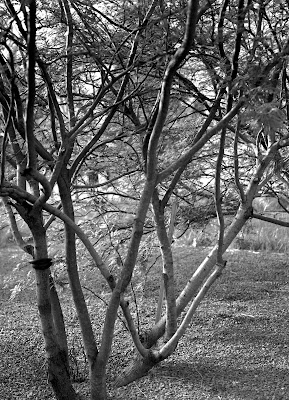I made the leap from 35mm film to medium format film with the purchase of a Pentax 645 Medium Format Camera. There was a little bit of a learning curve as the controls were different from my digital and film Canon SLR cameras. This camera is a bit older so the ranges on the shutter speeds aren’t as great as on my newer Canon’s as well. Also, the shutter button is a little touchy, which makes metering a little bit tricky. I may start carrying my film SLR to help with metering until I figure out a way to stop the camera from snapping the picture every time I think about pressing the shutter release.
Let’s not forget the film. The film I have to use with it is 220 film, which takes 6cm by Xcm pictures. In my particular case, the pictures will be 6cm x 4.5cm. Even though this is a smaller medium format, it’s still much bigger than 35mm. With 220 film I get about 30 exposures on the roll, which isn’t bad. The problem with 220 film is that it is starting to become hard to find locally. I can find some at the bigger online camera stores, but in an emergency, online isn’t going to help much.
The lens I have is a 75mm f/2.8 leaf shutter. Basically it’s a manual lens. I can set the shutter speed on the lens itself. Of course, doing this would require a handheld light meter, which I can’t afford and don’t want to carry. The good thing is that I can set the shutter speed to be controlled by the camera body, which allows the oh-so-tricky metering. The aperture and focus, however, are both set on the lens, which I have absolutely no problem doing.
Now for the fun part… the pictures. The following pictures are among the first taken with the camera in my possession:

This would have made a very nice portrait of the water wall at Williams Tower. The problem, however, is the right side. The dark area is a result of the film not being developed properly, which was my fault. During processing of 35mm film, I use 10 oz of a 1:4 solution, which completely covers the roll. In this case I failed to take into account the physical size of the 35mm film versus the 220 film, which is much bigger. The 10 oz of developer solution did not cover the whole width of the roll and, well, you see the result. Even though this picture failed, we can use this dark space to our advantage as seen on the next picture:

This is the headwater into the reflecting pool at my college. The underdeveloped right side looks like a shadow. Did you know that to just to the right there is a very large building that could have possibly cast a shadow into the water? You probably didn’t, but there is a large building just to the right of the headwater of the reflecting pool. I’ll just leave out the fact that a shadow cast on this water will never happen unless the planet develops develops a deeper tilt.

Sometimes nature covers your mistakes for you. The darkness of the tree makes it hard to perceive the dark underdeveloped area to the right. If you look close, you can see the water to the right of the tree trunk is a little darker, but off-hand I don’t think one would notice it.

Every roll has to have at least one usable picture and I feel this one is it. There is nice contrast and tonality here. Also, the shadows hide the underdeveloped area really well. Some may not care for the subject matter, but at this point I’m getting used to my new toy.
At this point I haven’t scanned the whole roll. My negative carriage can only scan two medium format negatives at the same time and it got a little late.
I hope you all enjoyed the pictures. Feel free to comment at will because I need the feedback to grow.
Leave a Reply